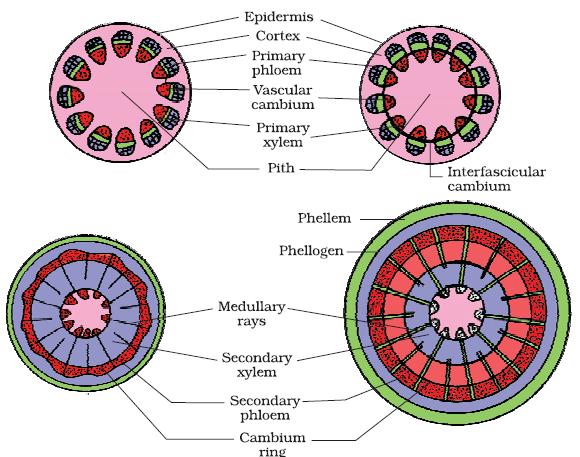The cambium that is present in the form of a ring forms new cells to the inside as well as towards outer side. Some cells are separated towards the pith region and they transform into secondary xylem. The cells that are divided towards the periphery transform into secondary phloem. The cambial cells that are found towards the inner side are observed to be more active. Hence, the quantity of secondary xylem is more than that of the secondary phloem and forms a compact mass. As the secondary xylem is continously formed and gets accumulated, the secondary as well as the primary phloem are crushed to occupy a small space. The primary xylem appears intact and is present at the center of the stele. The cambium forms at some regions a band of parenchyma cells which spread in between the two vascular bundles in radial direction. These are known as secondary medullary rays. The above figure shows the secondary growth occurring in dicot stem. The stages are observed in transverse section. 

No comments:
Post a Comment